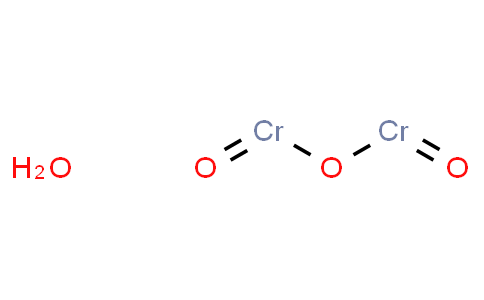
, Treatment of chromium powder with concentrated hydroiodic acid gives a blue hydrated chromium(II) iodide, which can be converted to related acetonitrile complexes. The Cr centres are octahedral, being distorted by the Jahn-Teller Effect. For bulk stoichiometric calculations, we are usually determining molar mass, which may also be called standard atomic weight or average atomic mass. Typical bulk packaging includes palletized plastic 5 gallon/25 kg. The compound chromium (II) iodide, CrI2 is soluble in water. A thermoelectric copper-iodide composite from the pyrolysis of a well-defined coordination polymer.

Simple and selective method for aldehydes (RCHO) -> (E)-haloalkenes (RCH:CHX) conversion by means of a haloform-chromous chloride system K. This equilibration is also disturbed by adding base too. An excess of ethanol is added slowly with stirring so that the temperature doesn't rise too much. Alkyl halides and nitroaromatics are reduced by CrCl2. Chromium(II) chloride is used as precursor to other inorganic and organometallic chromium complexes. Chromium iodide, also known as chromium triiodide, is an inorganic compound with the formula CrI3.
#Chromium iii carbonate how to#
This is how to calculate molar mass (average molecular weight), which is based on isotropically weighted averages. O yes no If a reaction does occur, write the net ionic equation. Use the solubility rules provided in the OWL Preparation Page to determine the solubility of compounds. Apart from the carbon dioxide, there is nothing new in this reaction: An excess of sodium hydroxide solution is added to a solution of the hexaaquachromium(III) ions to produce a solution of green hexahydroxochromate(III) ions. This has already been discussed towards the top of the page. It is a black solid that is used to prepare other chromium iodides. Express your answer as a chemical equation. Since the reduction potential of H+ to H2 in acidic conditions is +0.00, the chromous ion has sufficient potential to reduce acids to hydrogen, although this reaction does not occur without a catalyst. Potassium dichromate(VI) can be used in the presence of chloride ions (as long as the chloride ions aren't present in very high concentration). In this structure, chromium exhibits octahedral coordination geometry. Finding molar mass starts with units of grams per mole (g/mol). This inorganic compoundrelated article is a stub. carbonate and a solution of potassium Potassium dichromate will react with any excess hydrogen peroxide to give initially an unstable deep blue solution and it eventually gives the original chromium(III) ions again! The formula weight is simply the weight in atomic mass units of all the atoms in a given formula. This is then oxidised by warming it with hydrogen peroxide solution. Paleoenvironment reconstruction based on Cr isotope compositions of carbonates should take post-depositional processes into consideration.The SI base unit for amount of substance is the mole. Therefore, Cr isotope compositions of carbonates may easily be affected by post-depositional diagenetic processes, and Cr isotope variations in sedimentary carbonates should not exclusively correspond to changes in oxygen levels in the atmosphere and ocean. Because Cr(III) is incompatible with the carbonate crystal lattice, we suggest that most Cr in natural carbonates is adsorbed on the crystal surface and may be acquired at water–sediment interfaces after carbonate precipitation. Moreover, we find that Cr(III) can stimulate polymorph selection of vaterite during CaCO 3 precipitation, likely due to the formation of Cr hydroxide on the surface of vaterite crystals, hindering its transformation to calcite. It may exist in interstitial voids in crystals or occupy the position of Ca 2+ in the form of divalent Cr hydroxide cation, leading to a distorted structure. A small fraction of Cr can reside in the calcite crystal, but Cr 3+ cannot directly substitute for Ca 2+. Most Cr is adsorbed on the crystal surface of calcite or exists as amorphous Cr hydroxide . There are likely to be several Cr species in the coprecipitation samples. Extended X-ray absorption fine structure (EXAFS) results suggest that Cr(III) is incompatible with the calcite crystal lattice. Here, we conducted coprecipitation experiments for Cr(III) with calcium carbonate to constrain the behavior of Cr(III) in carbonate deposition environments. However, the incorporation behavior of Cr(III) into carbonates remains undefined. Recent studies have indicated that Cr found in natural carbonates is dominated by trivalent Cr, also known as Cr(III).

Chromium (Cr) isotope compositions of marine carbonates have widely been used to trace the evolution of oxygen levels in the atmosphere and ocean during geological history.


 0 kommentar(er)
0 kommentar(er)
